History, meaning and kinds of wasabi
There are various way to use wasabi!?
Japanese horseradish called wasabi is essential to sushi. Sushi and wasabi were established in Edo period from Edo period from 1603 to 1868. However, Japanese use wasabi since Asuka period from 538 to 710 according to the record written on a strip of wood. They also understand that it has an antimicrobial effect since Heian period from 794 to 1185 according to the oldest medical herb encyclopedia named Honzo-wamyo.
Wasabi has not only antimicrobial effect but also deodorizing effect on fish smell. This effect was valuable in Edo period because transportation technology was still in a primitive stage. In addition, wasabi has a stick effect to fish and rice.
Wasabi began to be cultivated in the same time Edo period. Ieyasu Tokugawa who was the founder of Edo was well knows as gourmet. The retainer of him served dishes with wasabi, he liked it and ordered his retainers to cultivate it. He guarded it closely in the first time because its leaf looked like his family crest. However, it became very popular among common people in the end of Edo period since it is essential to sushi.
Nowadays, there are two kinds of wasabi in Japan, sawa-wasabi and hata-wasabi. Sawa-wasabi lives in water, and its root is mainly eaten. Daioh farm which is one of the famous wasabi farms grows sawa-wasabi in spring water of Japanese Alps. Sawa-wasabi is little hotter than hata-wasabi. Hata-wasabi lives in a field, and its stem and leaf are mainly eaten. The most famous hata-wasabi farms are in Iwaizumi ciry of Iwate prefecture. The farms in there assumes 40 % share of hata-wasabi in Japan. Wasabi paste sold in grocery stores consists hata-wasabi, horseradish (Western horseradish) and some seasonings.
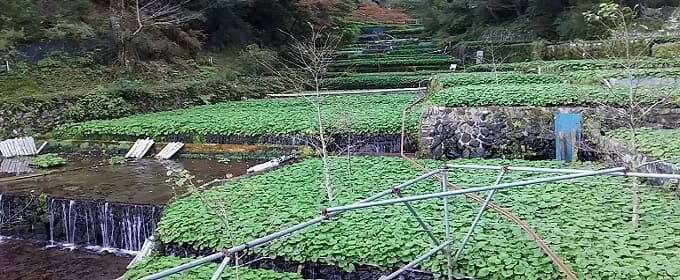
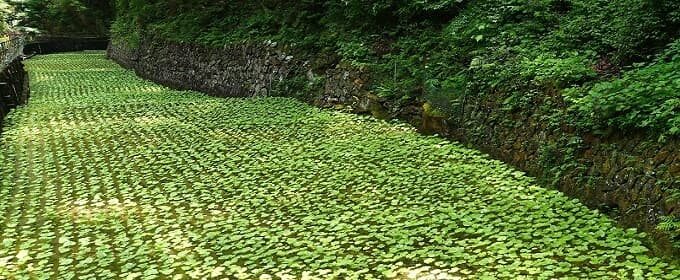
Wasabi paste sold in grocery stores is named Hon-wasabi or Nama-wasabi in Japan. Hon-wasabi is made from Japanese horseradish, the ratio of Japanese horseradish is over 50% of the total content. Nama-wasabi is made from raw horseradish including Japanese horseradish and Western horseradish. The ratio of them has no relation to that.
Wasabi is often used between fish and rice. It is a supporting role as sushi, but it is the main ingredient in Namida-maki. Namida-maki is a role sushi which consists only wasabi, rice and roasted laver (dried laver seaweed). It varies depending on the sushi restaurants. Many sushi restaurants use paste of wasabi, but some sushi restaurants use a slice of wasabi, shredded wasabi or pickles of wasabi.
Namida-maki is very hot since it is used much wasabi. People eat it with crying because of its hotness, Namida means tears in English. Namida-maiki is not only served to surprise consumer by chef but also served to get rid of the after-taste. It is served a few conveyor belt sushi restaurants and good-old sushi restaurants.
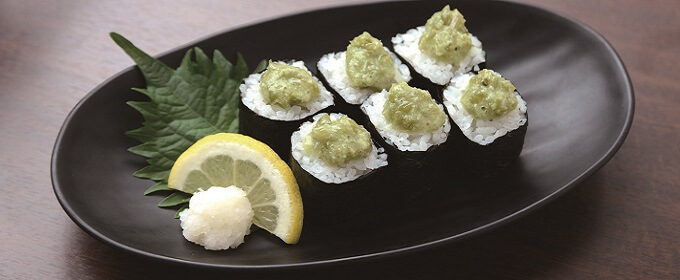
There is also Wasabi-sushi (Wasabi-ha-maki) which is a local sushi of Wakayama prefecture. This sushi is rolled by leaves of wasabi. It is crisp and little hot taste. Akadama restaurant which opens from 1950 is very famous for wasabi-sushi. This restaurant also serves other local dishes of Wakayama prefecture.
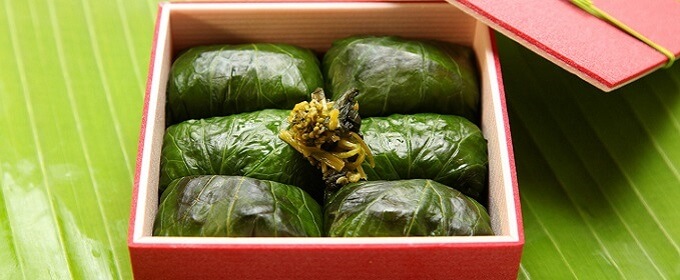
By the way, Japanese use wasabi not only sushi and slice of raw fish but also buckwheat noodles called soba, boiled fish paste called kamaboko, slice of Chinese yam and more. Some Japanese restaurants serve the original dishes with wasabi, salad, roast beef, steak, hot pot dish and donburi dish. The convenience store 7-Eleven began to sell a rice ball with wasabi from 2021 since Japanese like wasabi.
You can enjoy various wasabi dishes including sushi when you travel Japan. If you like sushi and conveyor belt sushi restaurant, you can invest it. Food and life companies (TYO:3563) and Kura Sushi Inc (TYO:2695) are listed in Tokyo Stock Exchange. These companies are also included some ETFs for investing Japanese companies.
- Ikura and Sujiko are little different!?
- Shake means salmon, but they are different!?
- Various crab and crab dishes in Japan!?
- What is Kappa-maki and Kappa?
- Good-old sushi restaurants do not serve raw shrimp sushi!?
- Japanese eat various squid and squid dishes!?
- There are various toro, that is confusing!?
- Various tuna and tuna dishes in Japan!?
- There are various way to use wasabi!?

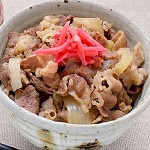 Gyudon
Gyudon Katsudon
Katsudon Unadon
Unadon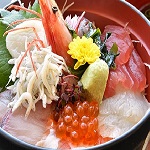 Kaisendon
Kaisendon